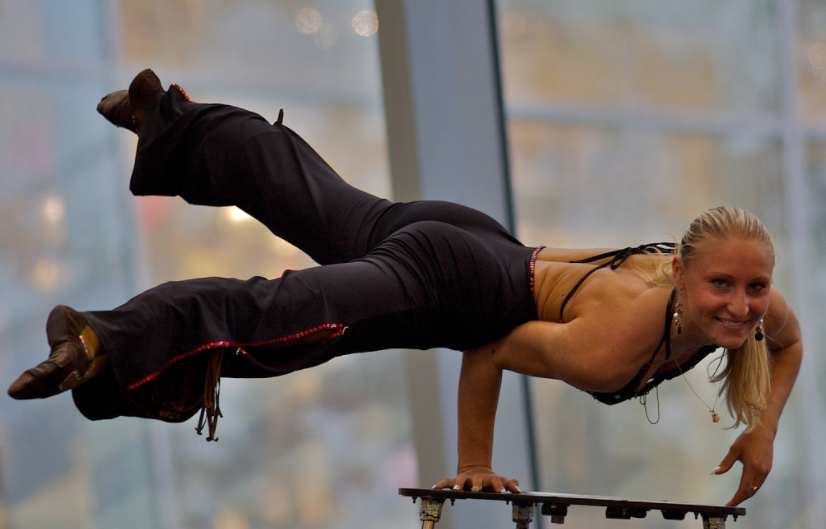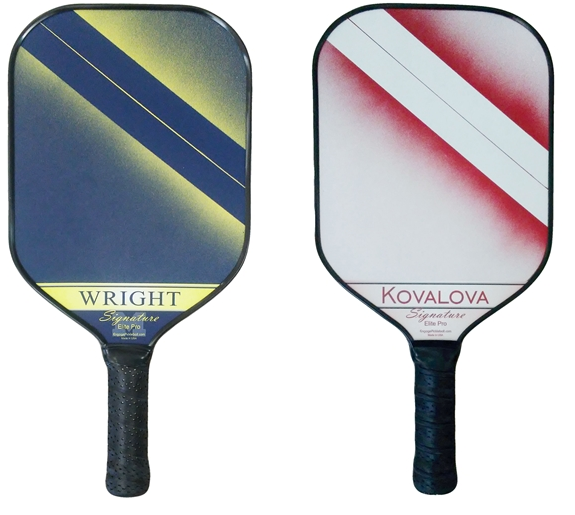There are many qualities to consider when purchasing a new paddle, but the one we hear rallied about the most is weight.
This is a reasonable focus for many players. Weight is the one attribute which can often make or (literally) break someone's well-being on the court.
If a paddle's shape doesn't feel right, you can swap from a long face to a wide one with relative ease. Choose the incorrect weight, and you may find old injuries flaring up, even putting a damper on your play due to pain.
It might seem intimidating, but selecting a paddle with the best weight for your needs doesn't have to be difficult. If you keep in mind the following attributes, then you'll be able to make an informed decision:
 What's your perfect weight? (Credit: Tim Lauer)
What's your perfect weight? (Credit: Tim Lauer)
Power
The most obvious way a paddle's weight affects play is through its ability to generate power. Heavy paddles provide additional speed and heft behind every hit, even when you aren't focused on slamming.
Contrary to the common myth that players with weak wrists are better off with a light paddle, sometimes an option slightly on the heavier side is just what's needed to give that extra pop of power to drive balls over the net.
Control
Paddle materials play a large role in how easy it is to direct pickleballs during play, with softer options like polymer considered easier to control. While this is half of the equation, weight is another factor which affects how well you can manage the game's tempo.
A heavier paddle is more difficult to move quickly. Even strong players take more energy to move a heavy paddle to a different position, which can prove problematic during fast rallies at the net.
A lighter paddle is easier to maneuver, but on the other hand, it's harder to defend against slams due to having to stabilize the paddle yourself instead of letting a dense paddle absorb the shock for you.
 You shouldn't need a blackboard to know the ball will go where you want it (Credit: simpleinsomnia)
You shouldn't need a blackboard to know the ball will go where you want it (Credit: simpleinsomnia)
Material
While it would be nice if manufacturers could magically create their paddles at any weight players desired, it's tricky to balance so many factors during construction. Composite materials are generally heavier than graphite, which is why you'll see most heavy paddles use composite faces while lighter paddles use graphite faces.
There are exceptions of course, especially as paddle technology has become more refined. Manufacturers are offering all sorts of material pairings at different weights. But if you prefer the feel of a certain face type, you may want to check what weights are offered for that particular material.
As of now, paddles classified as 'very heavy' on our site are still entirely composed of composite or wood options, though you can find a few graphite paddles if you move down to the standard 'heavy' category. The reverse provides more options (there are plenty of lightweight composite paddles).
Balance
When discussing weight distribution, paddles can be referred to as head-heavy, handle-heavy or balanced. Depending on your play style and background in other sports, you may prefer a head-heavy paddle since this feels more akin to a tennis racquet and helps lead your swing into the ball.
Handle-heavy designs are great if you have more of a 'wristy' game and want the paddle to feel like an extension of your body, where balanced paddles are suitable for just about any player.
A paddle's weight combined with its shape determines its weight distribution, so be sure to keep an eye on how each paddle's balance will affect your ability.
 If only we all had this level of balance! (Credit: Ricardo Liberato)
If only we all had this level of balance! (Credit: Ricardo Liberato)
If you like the way a paddle plays but still feel something is 'off,' take advantage of our 30-day return policy and give it a shot in a different weight. Even something as small as a 0.2 oz difference is noticeable to pros at a high level of play.
You never know when a simple change may give you just the edge you need.
Following this train of thought, Engage has recently announced their famous Elite Custom Pro is now being offered in a new 'Lite' model which averages an even 7.6 oz.
This is lighter than their original 7.9 oz Standard model, so players who loved the Custom Pro's length and versatility but craved more speed are recommended to give the paddle another perusal.
Check out the Elite Custom Pro listing and let us know if you have any questions about how to determine your most suitable paddle weight!
Share Product:
SHARE THIS:



